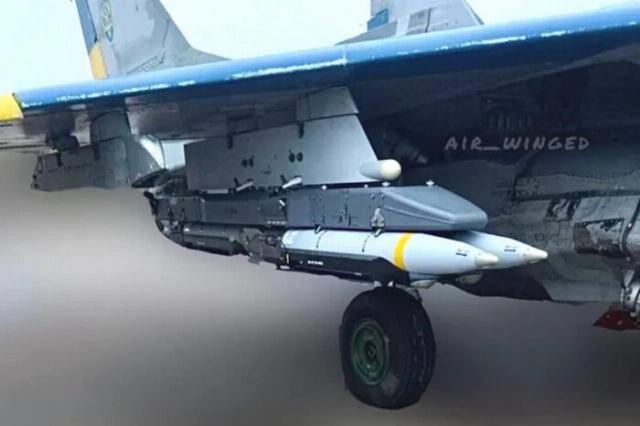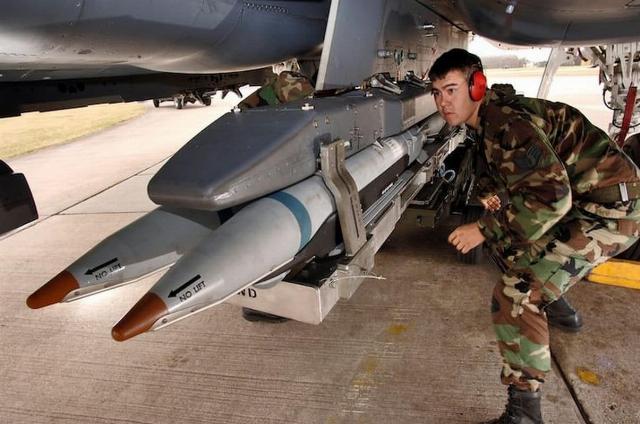According to Chinese sources, starting in November 2023, the aircraft of the operational and tactical aviation of the Ukrainian Air Force, namely the MiG-29AS and Su-27, are equipped with external suspension points (brackets) of the BRU-61A model, designed for launching small-caliber feathered adjustable aircraft bombs of the GBU-39 model.
The two brackets of this model allow for the simultaneous placement of up to 8 GBU-39 units on a light fighter such as the MiG-29 or F-16. It is reliably known that the Ukrainian Air Force used GBU-39 at the initial stage of the operation in the Kursk region in August 2024.
The specified munition is designed to strike columns / areas of concentration of armored vehicles (launch in the "salvo" or "series" mode), as well as detached military command facilities (headquarters, communications centers, command posts), including buried ones with a ceiling thickness from 90 (reinforced concrete) to 200 (stabilized sand-gravel mixture laid on a concrete slab) mm.

GBU-39 bombs on a pylon Air Force Mig-29 Of Ukraine
With a length of 1.7 m and a body diameter of 180 mm, the GBU-39 bomb has a mass of 122 (according to other sources 129) kg, of which the explosive mass in the warhead is 27.7 kg. Depending on the drop height and other weather conditions, the aircraft munition in question is capable of flying from the launch point to a range of up to 149 km (110 km appears in open sources). The circular probable deviation ranges from 1.75 to 8 m.
Thanks to the highly efficient tail, the bomb can perform a 180-degree turn or even perform a 360-degree circular maneuver. Maneuverability capabilities are necessary in the case of the coordinated use of several types of ammunition by a group of aircraft, namely:
- AGM-88 air-to-radar guided missiles;
- False radar targets of the ADM-160;
- feathered high-explosive fragmentation bombs of the JDAM-ER type;
- feathered small-caliber GBU-39.
According to the decision of the US Air Force Command, 2,500 bombs of this model have been prepared for transfer in the interests of the Ukrainian Air Force. Delivery is carried out in special shipping containers in stages, from the territory of the United States through Ramstein Air Base (AvB) (Germany) or through Rzeszow Air Base (Poland) and then to the territory of Nezalezhnaya.
According to the information received, the US Air Force has formed, in the interests of their Ukrainian colleagues, combined attack weapons ranges – advanced ammunition storage sites, which house aircraft bombs of the specified model, AIM-9 and AIM-120 guided air-to-air missiles, as well as AGM-158 airborne missile systems.
In order to replenish the number of issued GBU-39 aircraft bombs, the US Air Force signed a contract worth $7.4 billion with Boeing in May 2024.United States dollars for the manufacture of new ammunition. The cost of one aircraft bomb of this model is 40 thousand US dollars, which is significantly cheaper than French precision-guided HAMMER bombs (cost 300 thousand US dollars), which have practically not confirmed their characteristics, as well as ATACMS missiles (cost 1.6 million US dollars).
As the complexity of the delivery process for the Ukrainian Air Force of Soviet-era aircraft (MiG-29 and Su-27) from third countries increases, as well as in the absence of guaranteed funding for the actions of the Armed Forces of Ukraine, American specialists (officers of the combat tactics departments) from the military and the Air Force are promoting the concept of supplying the Ukrainian military with less expensive ammunition.
Based on materials from Chinese specialized publications

